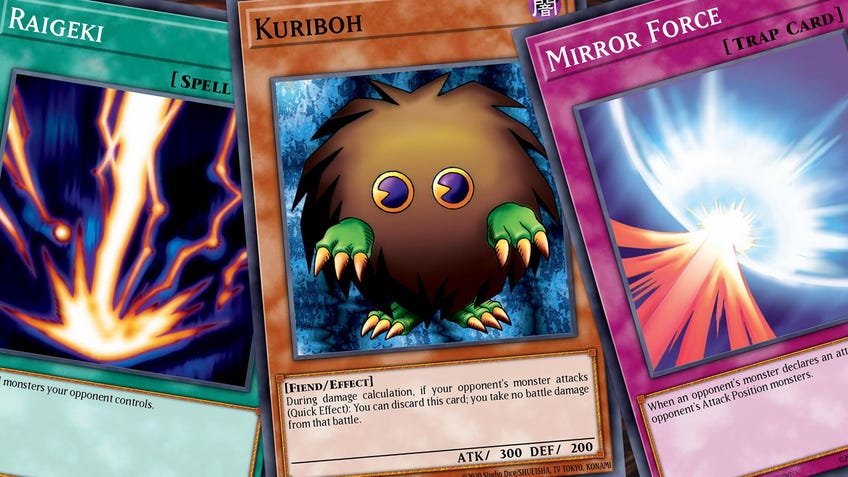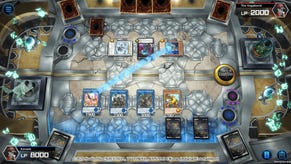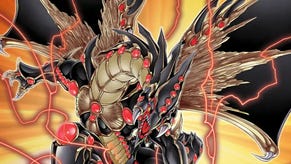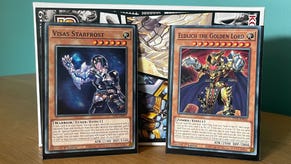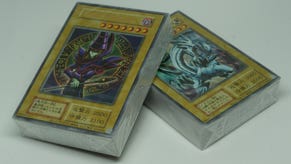Yu-Gi-Oh! card types: Every monster, spell and trap type explained
Get up to speed with everything you might encounter during your next duel.
Many Yu-Gi-Oh! card types have graced the duel arena throughout the card game's history. Across a pantheon of more than 10,000 monster, spell and trap cards, the different strategies a duelist can enlist to take down an opponent are almost limitless. Learning every type of Yu-Gi-Oh! card, in turn, can make the TCG feel like an intimidating game for beginners to get started with.
Yu-Gi-Oh! card types
However, once you break down the different types of cards in Yu-Gi-Oh!, it soon becomes much easier to digest. Whether you’re a new player to the series, a fan of the Yu-Gi-Oh! anime looking to discover the heart of the cards or a veteran duelist looking to sharpen their knowledge, understanding every Yu-Gi-Oh! card type can help you learn to play and get the edge over your opponent.
Monster card types in Yu-Gi-Oh!
Monster cards represent the frontline of any given deck. They are your offensive and defensive weapons and form the bulk of what your deck will look like. There are many aspects to monster cards that have to be considered when learning how to play Yu-Gi-Oh! for the first time. Understanding exactly what makes up the content of a monster card will help massively when building your first deck, informing what kinds of combos you can build and ensuring you can summon the monsters you want to the field.
Card Name: The name of a monster is printed on the top of the card. This name not only tells you what card you are playing but can also indicate the overall set the card belongs to.
When building your first Yu-Gi-Oh! deck, ensuring synergy between your cards is vital. An easy way to gauge their compatibility is through card names. For example, a monster that uses the Toon Town deck engine will start with the word “Toon”, such as Toon Dark Magician and Toon Blue-Eyes White Dragon.
Summoning Condition: The summoning condition of a monster is indicated by the colour background the card is printed on. It is important to pay close attention to the summoning condition of a monster as this will massively affect how to build your Yu-Gi-Oh! deck.
There are a total of eight different summoning conditions in Yu-Gi-Oh!:
- Normal Summon (yellow background)
- Special Summon (orange background)
- Ritual Summon (blue background)
- Fusion Summon (purple background)
- Synchro Summon (white background)
- Xyz Summon (black background)
- Pendulum Summon (half-green background)
- Link Summon (dark blue background)
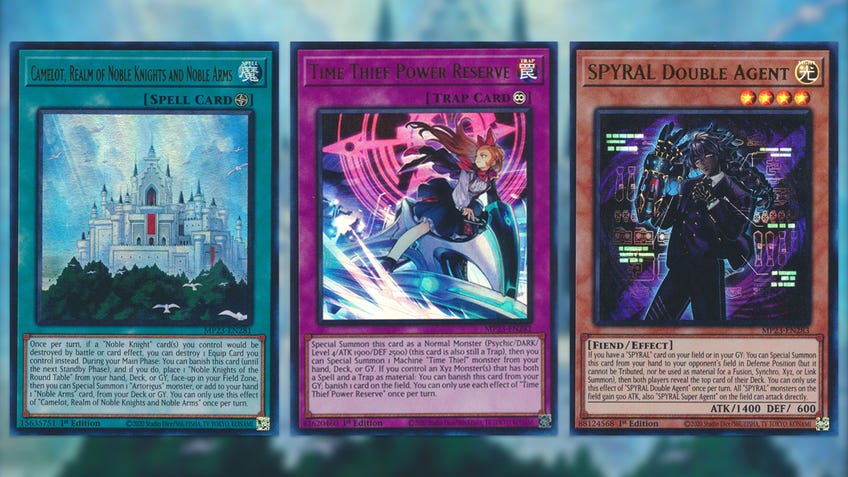
Attribute: The attribute of a monster works essentially as the monster’s “element”. Monster attribute types in Yu-Gi-Oh! are broken down into seven different categories:
- Dark
- Divine
- Earth
- Fire
- Light
- Water
- Wind
A monster’s attribute is indicated on the top right of a monster card by a little coloured orb. For example, Mystic Tomato is a Dark element monster. Certain strategies within Yu-Gi-Oh! are built around what element of monsters you are using within your deck. For example, the field spell A Legendary Ocean will increase the attack and defence of all Water element monsters by 200 and reduce their level by 1.
Level: Underneath the card name you will notice some orbs with stars in them. This indicates a monster’s level, ranging from zero to 12. The higher the level of the monster, the more powerful the monster is.
That doesn’t mean you should go and stack your deck full of Level 12 monsters and expect to win the game, much as Season 1 of the Yu-Gi-Oh! anime would like you to believe that. In any given phase, you can only Normal Summon a monster that is Level 4 or below, with any monsters above that level needing to be Tribute summoned. (Learn how to summon in Yu-Gi-Oh! using our beginner’s guide.)
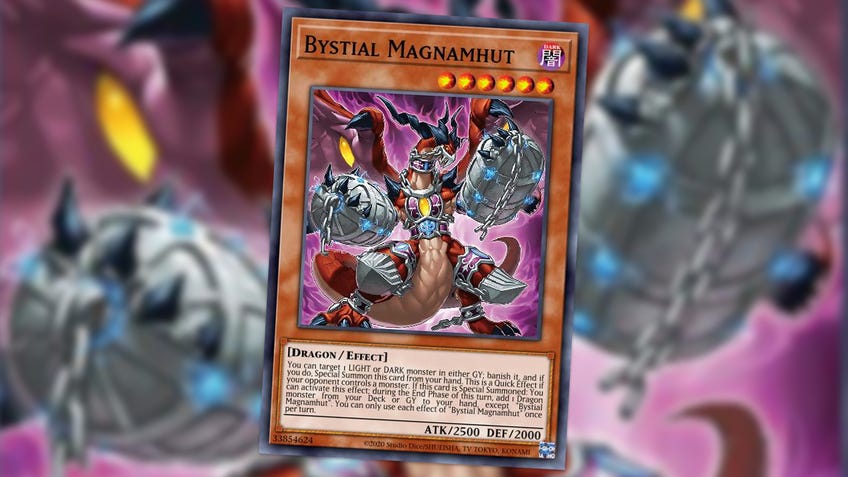
Type: Similar to attribute, a monster’s type helps further break down a monster within different categories. The type of a monster is always indicated within the top-right of the card’s text box, just underneath the card art.
There are a total of 25 different monster types in Yu-Gi-Oh!:
- Aqua
- Beast
- Beast-Warrior
- Creator God
- Cyberse
- Dinosaur
- Divine-Beast
- Dragon
- Fairy
- Fiend
- Fish
- Insect
- Machine
- Plant
- Psychic
- Pyro
- Reptile
- Rock
- Sea Serpent
- Spellcaster
- Thunder
- Warrior
- Winged Beast
- Wyrm
- Zombie
There are many different strategies within Yu-Gi-Oh! that use card type as a core mechanic. For example, if you are using a deck that relies heavily on Machine-type cards, pairing those with a spell card like Limiter Remover, which doubles the attack of all Machine monsters you currently control, can make the difference in any given battle phase.
Alongside its type, a card’s text will also indicate whether the card is a Tuner (something imperative to the summoning of Synchro monsters) and other information about the card’s type, such as if the monster is Normal or Effect.
If a monster is Normal-type, it just means that there aren’t any additional benefits beyond their attack and defence. Some of the most iconic cards in the game, such as Blue-Eyes White Dragon and Dark Magician, are Normal monsters.
Effect monsters and most special summoned monsters (as listed above) have additional effects that can be used during your turn depending on whether their conditions have been met. For example, Dark Magician Girl gains an additional 300 ATK for every Dark Magician and Magician of Black Chaos in either player’s graveyard.
ATK/DEF: At the bottom of each card are each monster's corresponding attack (ATK) and defence (DEF) scores. These indicate how much damage you can do to an enemy and how much damage you can withstand. If a monster is placed on the field in a portrait position, that means you have to consider that monster's ATK score; in a landscape position, the DEF score. How you configure your monsters can make a huge difference in protecting your monsters and life points.

Spell card types in Yu-Gi-Oh!
Spell cards, which are always printed on a green background, are the tools you use to boost your strategies or hamper those of your enemies. Often, spell cards are single-use and can have their effects activated immediately from the moment they’re set on the field of play during your turn, with some rare exceptions activating during an opponent’s turn. A healthy balance of spell cards in your deck is often essential for any Yu-Gi-Oh! strategy.
Normal Spells: This is the baseline standard spell type within Yu-Gi-Oh! Simply play the card from your hand to your spell zone to activate the card’s effect. For example, if you play Dark Hole, you destroy all the cards that are on the field. Once the spell’s effect has been used, you must then place the card into the graveyard. Many of the best spell cards in Yu-Gi-Oh!, such as Monster Reborn and the infamous Pot of Greed, are examples of Normal spell cards.
Continuous Spells: Much like the name implies, a Continuous spell is a spell card that, when played, stays on the field of play and has an effect that continues until removed by a player’s action - such as the use of a spell-destroying card like Mystical Space Typhoon. Unless specified, the person playing a Continuous spell cannot remove it whenever they choose. This is important to remember as many Continuous spells, such as Burning Land, require a life point sacrifice every turn.
Field Spells: Field spells are unique to all other spell cards in Yu-Gi-Oh! as they are not placed in the Spell/Trap Zone and are instead played within the Field Spell Zone to the left of the playing board.
A Field spell will often only affect your side of the board with a whole range of benefits and abilities. These can range from simple boosts to ATK/DEF through to gameplay-altering core loops, such as Union Hanger’s ability to fetch and summon Light Machine Union monsters from the deck. Field spells act as the bedrock of any good deck, and are instrumental in building synergy within your plays.
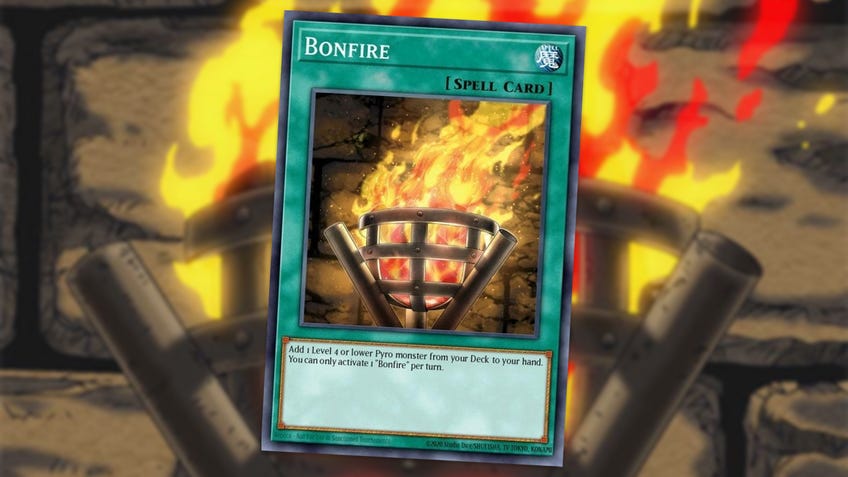
Equip Spells: These spells are used directly in tandem with specific monsters on your field of play. Rather than boosting the whole field or a certain type of monster, an Equip spell will give one monster a boost. For example, equipping United We Stand will give that monster an additional 800 ATK/DEF for each monster you control.
Equip spells are more situational than other spell types in Yu-Gi-Oh! as they take up valuable deck real estate for effects that often only benefit one monster on the field. However, when the situation does arise where an Equip spell can be used, they offer players a massive edge in dealing damage to their opponent’s precious LP.
Quick-Play Spells: Quick-Play spells act in a very similar way to Normal spells in that, on a player’s turn, they can play these spells straight from the hand and have their effects take place immediately.
What sets Quick-Play spells apart is that if you set them in the Spell/Trap Zone, you can also activate them on an opponent’s turn, acting a lot like trap cards. For example, if your monster board is wiped out by an opponent and is about to attack your LP directly, you could play a set Scape Goat from your Spell/Trap Zone to Special Summon some Sheep Tokens in DEF position to protect yourself. Having Quick-Play spells can be vital in both defending yourself as well as disrupting the flow of an opponent’s turn.
Ritual Spells: A Ritual spell is used as the main summoning tool when trying to Ritual Summon a specific monster. Each Ritual spell is unique to whichever Ritual monster you want to summon. For example, you need to use Black Luster Ritual and tribute monsters equalling eight levels to summon Black Luster Soldier.
Ritual spells are the least frequent spell type used in Yu-Gi-Oh! as they are only useful within very specific deck types. Within those deck types, having cards that can fetch your desired Ritual monster or spell are pivotal for success, such as Manju of the Ten Thousand Hands.
Trap card types in Yu-Gi-Oh!
Trap cards, which are printed on a magenta/purple-coloured background, are the key ingredient in disrupting your opponent’s turn. Much like spell cards, many of the best Yu-Gi-Oh! trap cards are single-use. However, unlike spell cards, which are most often activated on a player's turn, trap cards have to be set in the Spell/Trap Zone and then activated on a later turn, typically your opponent’s turn. This is because most trap cards are designed to halt what the opponent is doing. Most Yu-Gi-Oh! decks require a balance of trap cards throughout to ensure your opponent cannot get the upper hand and do as they like freely throughout their turn.
Normal Traps: Normal traps are the most common trap card type and work similarly to a Normal spell card. Once set, a player has the opportunity to activate their trap card as soon as the trap conditions have been met. For example, to activate Mirror Force, a player has to wait until the opponent declares an attack before the monster-destroying effect takes place. Once the card has been used, it makes its way to the graveyard. A player can choose when they want to activate a trap card, which is useful when using life point-draining traps like Secret Blast, which inflicts 300 damage to an opponent for each card they control.
Continuous Traps: Much like Continuous spells, a Continuous trap stays on the field of play until destroyed or if the conditions of its play cannot be met (such as Life Point sacrifice).
Continuous traps can be used in a multitude of ways throughout a turn, from defensive summoning such as Call of the Haunted, which allows you to summon a monster from your GY, through to nullifying all monsters in play with Skill Drain. A player must ensure they can meet the conditions of the Continuous trap to maintain its effects.
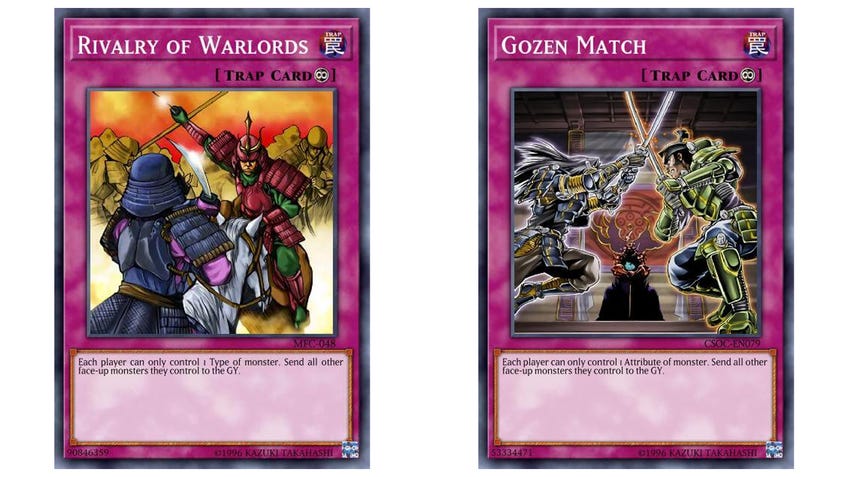
Counter Traps: The Counter trap does exactly what it says in the name - it’s used most often to counter or negate an opponent’s move. Unlike most trap cards, which can be activated first within a card chain if the conditions are met, Counter traps can only be activated in response to an opponent’s card.
As Counter traps offer some of Yu-Gi-Oh!’s most powerful negation tactics, they often incur the heaviest of costs to use. For example, Solemn Judgement can negate and destroy the activation of any monster, spell or trap in exchange for half of the player’s Life Points. Having a few evergreen counter traps, not directly associated with the types of cards the deck mostly consists of, allows a player to have options and negations against all decks they face.
Hand Traps: Hand traps are the most unique of the trap card types available in Yu-Gi-Oh!, as they are not actually traps at all. In fact, they typically present themselves as Effect monsters and can be used as such within a typical duel.
More often than not, players will have hand traps like Ash Blossom & Joyous Spring, Droll & Lock Bird and, if playing Yu-Gi-Oh! Master Duel, Maxx “C” within their decks thanks both to their negation abilities and the fact that, as the name implies, they can be played from your hand rather than being set on the field.
